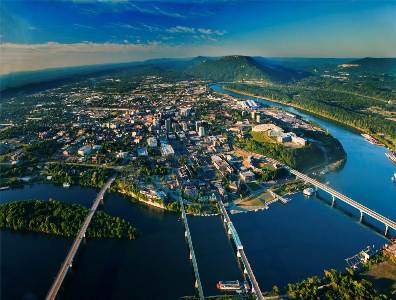If You Build It, They Will Come: Chattanooga’s Broadband Leaders Speak
By Jotham Sederstrom July 23, 2013 1:00 pm
reprintsChattanooga, Tennessee, provides residents and businesses with broadband speeds of up to 1 gigabit per second. J. Ed. Marston, vice president of Marketing & Communications for the Chattanooga Area Chamber of Commerce and with Dana Bailey, vice president of Corporate Communications for EPB, the municipally owned electric power distributor, spoke with Wired City last week about the state of broadband technology and how Chattanooga became a symbol of speedy service.
 Wired City: How has the introduction of fiber broadband benefited residents and businesses?
Wired City: How has the introduction of fiber broadband benefited residents and businesses?
JM: EPB’s fiber network has benefited both residents and businesses in a number of ways:
Many businesses are seeing tremendous productivity gains related to the ultra-broadband data speeds the fiber optic network delivers. Dr. Jim Busch of Radiology Associates offers one of the best examples. His group of physicians reads medical images sent from both hospitals and other doctor’s offices. Dr. Busch calculates that the Fiber Network’s faster download and upload speeds when transmitting these very large medical images provides productivity gains equivalent to adding more than one radiologist to the practice.
Have you found that faster speeds inspire innovation?
JM: Definitely. The fiber network is a platform for launching both groundbreaking applications and new businesses. One example is Engage 3D, a Chattanooga venture that uses a reprogrammed Kinect camera lifted from Microsoft’s Xbox 360 gaming system to transmit 3D images in real-time. Developed as part of Mozilla’s US Ignite Challenge, Engage 3D proved its technology by transmitting a 3D image of a snake at the Tennessee Aquarium (in Chattanooga) to a student group in Chicago.
New companies rely directly on ultra-bandwidth data speeds, motivating the start-up of many technology-oriented companies. The Chattanooga Chamber runs the INCubator, one of the largest business incubators in the U.S. Over the last few years, technology-centered companies comprise the INCubator’s most rapidly growing segment.
Has the initiative helped draw any new tenants, companies or businesses to the city?
JM: Yes. The Fiber Network served as a major point of attraction for recruiting a HomeServe USA facility in 2010. The company has already undergone two expansions (they now employ more than 300 people in Chattanooga).
The Fiber Network also motivated a cloud computing company called Claris Networks to relocate most of its technical infrastructure to Chattanooga because they discovered they could deliver their cloud computing services from Chattanooga to other cities more effectively and affordably than they could by locating their data infrastructure in the city they are serving.
How challenging was it to create this citywide system?
DB: Since EPB already had an electric power distribution system in place, we already had the poles, the rights-of-way, the underground infrastructure, capability to generate and issue bills, etc. There were certainly challenges—but most of them were not technical or operational in nature.
Do you have any relationship with Google (GOOGL) Fiber?
JM: Chattanooga does not have a formal relationship with Google Fiber, but we compare notes.
How expensive was the implementation of the grid?
DB: The total cost of the communications network and the smart grid is just at $300 million. $111 million of that was a matching grant from the Department of Energy and does not have to be repaid.
How long will it take for Chattanooga to repay the initial bond?
DB: Much like a mortgage, the bond issue will be paid off over a 25-year period.


